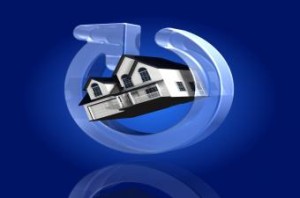Has the Housing Market Reached Bubble Status Again?

With year-over-year price increases continuing on a double-digit course despite recent slowdowns, the ever-present question has once again come to the fore for market commentators and analysts: Has the housing market reached bubble status once again?
The answer—at least, according to Trulia chief economist Jed Kolko—is both yes and no.
In the company’s latest quarterly Bubble Watch report, Kolko estimates national home prices are still around 5 percent undervalued when examining long-term fundamentals like historical prices, incomes, and rents. While ongoing improvements in prices have brought the market close to a tipping point, he notes that it’s far cry from the 39 percent overvaluation in the first quarter of 2006.
“Even though recent double-digit price gains look unsustainable, current national price levels are not cause for alarm,” Kolko said in a blog post. “Sharp price gains, like we’ve had in 2012 and 2013, are not the sign of a bubble unless price levels look high relative to fundamentals.”
Furthermore, “the slowdown in price gains make[s] it less likely that we’re heading for another bubble,” he added.
While the national market is still undervalued, conditions vary widely at the local level. According to Trulia, out of the 100 largest metro markets, home prices are overvalued in 19, including eight of the 11 largest California metros. The greatest danger is along the state’s southern coast, in markets like Orange County, Los Angeles, and Riverside-San Bernardino—which make up three of the five most overvalued markets in the country. (The two remaining slots go to Honolulu and Austin.)
While the number of overvalued housing markets is on the rise, Kolko again says historical perspective is needed: “In 2014 Q1, prices were overvalued in 19 of the 100 largest metros, which is the highest number since 2009 Q4; furthermore, prices were overvalued by more than 10 percent in 4 large metros, which is the highest number since 2008 Q4.
However, at the height of the bubble, all 100 were overvalued, and 91 were overvalued by more than 10 percent.”
